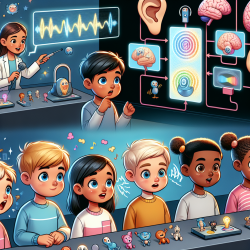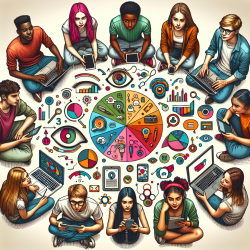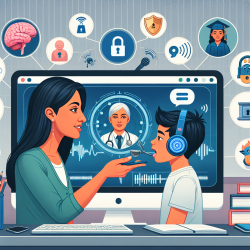Introduction to Audio-Visual Illusions
As speech-language pathologists, understanding the nuances of audio-visual perception can significantly enhance our therapeutic approaches. The study titled "Speech and Non-Speech Audio-Visual Illusions: A Developmental Study" sheds light on how children perceive and integrate audio-visual stimuli, providing valuable insights into their developmental trajectories.
The McGurk Effect and Beyond
The McGurk effect, a well-documented audio-visual illusion, occurs when conflicting visual and auditory stimuli lead to a fused percept. For example, hearing "baba" while seeing "gaga" often results in perceiving "dada." This study explores the development of such illusions in children aged 5 to 19, comparing speech-related illusions like the McGurk effect with non-speech illusions such as the Illusory Flash and Fusion effects.
Key Findings
- Speech vs. Non-Speech Illusions: The study found that the strength of audio-visual speech illusions varies with age, reflecting distinct maturational processes. In contrast, non-speech illusions remained consistent across ages.
- Developmental Patterns: Children aged 5-9 exhibited fewer McGurk illusions compared to older groups, suggesting that audio-visual speech perception continues to mature beyond early childhood.
- Lip-Reading Abilities: Contrary to some previous beliefs, the study found no significant correlation between lip-reading skills and the frequency of McGurk illusions, indicating that other factors contribute to the development of audio-visual speech integration.
Implications for Practitioners
Understanding these developmental patterns can guide practitioners in tailoring interventions that align with a child's maturational stage. Here are some practical applications:
- Age-Appropriate Strategies: Recognize that younger children may rely more on auditory cues, while older children integrate visual cues more effectively. Tailor therapy sessions to gradually enhance visual-auditory integration.
- Focus on Multisensory Integration: Encourage activities that promote the integration of audio-visual stimuli, such as interactive storytelling or games that require matching sounds with corresponding visual cues.
- Continuous Assessment: Regularly assess a child's progress in integrating audio-visual information to adjust therapeutic strategies accordingly.
Encouraging Further Research
This study opens the door for further exploration into the mechanisms underlying audio-visual integration in children. Practitioners are encouraged to delve deeper into this area, potentially contributing to a more comprehensive understanding of how these processes develop and can be enhanced through targeted interventions.
To read the original research paper, please follow this link: Speech and Non-Speech Audio-Visual Illusions: A Developmental Study.










